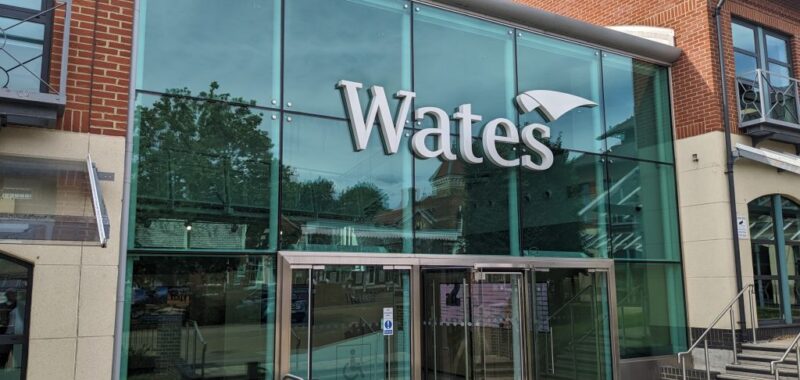Main contractor Wates may have posted record turnover in 2024 – plus a pre-tax profit for the 25th consecutive year – but its chief executive isn’t resting on his laurels.
Speaking to Construction News on 8 April after Wates released its financial results for the 2024 calendar year, Eoghan O’Lionaird said he was still looking to apply lean management techniques to the business.
Two years ago. after his appointment as Wates group chief executive, O’Lionaird told CN about his ambitions to improve productivity based on his formative work experiences in Japan.
“We call it ‘business optimisation’ at Wates, and we have programmes running in every division in the group,” he remarked.
There are no quick fixes involved here – he described the programmes as “generally longer-wavelength initiatives” focused on driving productivity and “ironing out the kinks in our processes”.
But family-owned Wates – ranked seventh in last year’s CN100 index of top UK contractors – has already put some plans into action. For example, it set up a supply-chain policy team with an operating framework – or “bible” as O’Lionaird put it – that describes everything the tier one firm requires doing on a site.
“In practical terms, it’s a compendium of dozens and dozens and dozens of processes – we’ve been working through all of them” with subcontractor partners.
It’s early days for the supply-chain bible. “I wouldn’t say we’re in the foothills but we’re climbing hard at the moment,” O’Lionaird said. “We’re going to address all of the core [site] functions over the next while, and take out the unnecessary waste that inevitably builds up in processes if left unattended over time.”
Engaging the supply chain is important to O’Lionaird, but in his view, new technology, AI and data analytics are other avenues to becoming leaner.
“The age of data analytics has well and truly arrived,” he proclaimed. “The construction industry is catching up to that, whether by extracting data from operations, or creating and tracking KPIs on a daily basis as we now do. That’s relatively new to us.”
Wates’ latest accounts described how AI and machine learning played their part in improving performance, not only in technology but also in less obvious areas such as safety and proposal management.
For example, the firm has been trialling AI in partnership with Amazon Web Services on a site in central London. Here, AI-enabled wearable devices are being deployed so that site managers can monitor and control worker movements in an exclusion zone.
There were no specific details of investment in AI and data analytics in the accounts, but chief financial officer Philip Wainwright told CN: “We have a central team of 10 people who just focus on how we can apply data to our processes.”
O’Lionaird highlighted the importance of sustainability and decarbonisation to Wates. Its Property Services division undertook £200m of decarbonisation and retrofit work last year and acquired Merseyside-based property services firm Liberty Group last October.
“We don’t make a lot of acquisitions, but this is an important one,” he said. “We think the age of conversion from gas to electric heating, in particular air-source and ground-source [electric] heat pumps, is upon us.
“We see an opportunity to leverage Liberty’s capabilities not just in the maintenance of gas boilers but also in the conversion to electric source heating. And we hope this will drive profitable growth in the future.”
In common with many other tier one contractors, building safety remediation is a key consideration for Wates, which reduced its provision from £75.6m to £53.2m last year.
“We’re looking forward to a period where we continue to provide good service to these [high-risk] buildings, but it’s a reducing tail,” said Wainwright.
O’Lionaird emphasised that Wates has “leaned into” its remediation work. “In some instances, we’ve proactively reached out to our clients where we’ve found the need for us to undertake remediation.
“We anticipate that the major projects [requiring remediation] have already been identified – they’ve either been remediated or are being worked on. But if there are more to come, we will approach them in exactly the same way we have done before.”

